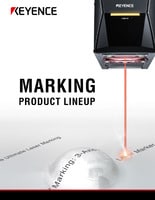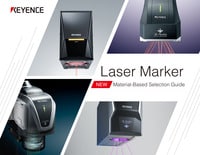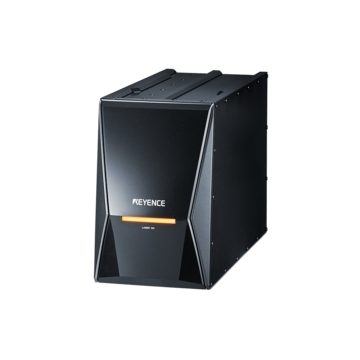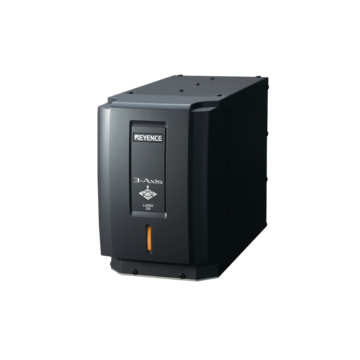Laser Marking Systems / Laser Markers
Carbon Migration Laser Marking: Everything You Need to Know
-
Tags:
- Laser Marking , Laser Annealing , Medical
In many industries such as medical and aerospace, products require permanent marks for labeling or traceability purpose. The issue is, common marking methods can change the surface properties of these parts, throwing them out of spec and creating scrap. Carbon migration is a style of laser mark that will create a high quality dark black mark without the risk of damaging the surface or effecting material properties. It is extremely common in both of these industries as laser marking machines can provide ultimate flexibility in the marking process and produce the highest marking quality possible.
What is Carbon Migration Laser Marking?
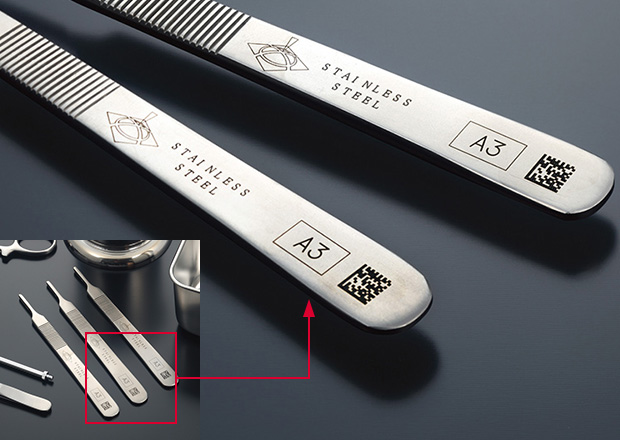
Overview of the Process and How It Works
Carbon migration laser marking is a type of laser marking technology that activates the carbon properties of a material to produce a smooth black film with a mark. This process only works on metals containing carbon; such as stainless steel, carbide, iron, and titanium.
The process begins by pointing a high-energy fiber laser onto the metal or metal alloy’s surface. Once the metal becomes heated enough, the carbon molecules bond and the properties reach the surface. A permanent and precise dark mark then appears. This differs from standard laser marking styles in that it leaves the metal undisturbed and undamaged, making it ideal for tight tolerance or highly detailed industries like the aerospace and medical fields respectively.
Comparison to Other Marking Methods
There are many marking methods used across manufacturing projects besides carbon migration, including dot peen marking, chemical etching, and stamping. But, not all marking methods are created equal.
- Dot Peen Marking
-
Dot peen marking, also known as pin marking, uses a pin to carve small dots that form a design. Dot peen marking differs from carbon migration because it uses friction rather than a molecule reaction to create the marks. Dot peen marking is a manual process that involves physical contact with the product, opening up opportunities for damage and consumable costs as the pins wear with time. It is generally also limited in terms of what kinds of shapes and thicknesses of products it is able to mark on.
- Chemical Etching
-
Chemical etching is a process that uses ferric chloride or nitric acid to mark a surface. Although chemical etching is kind of similar to carbon migration in that both processes rely on a bond, chemical etching follows a completely different process. Unlike carbon migration, chemical etching is a lengthy process with many steps done manually. It also produces consumables that are toxic to both the human body and environment—carbon migration does not produce any.
- Printing
-
Printing is either accomplished by adding ink onto a surface or adding ink to a label and then putting it on a surface. Unlike carbon migration’s permanent quality, printing is unreliable because it can wear, smudge, or disappear completely.
Discover more about this product.
Click here to book your demo.

Applications and Benefits of Carbon Migration Laser Marking
Industries and Products That Commonly Use Carbon Migration Laser Marking
- Medical Devices
-
Medical devices are often made up of grade 316 stainless steel because of the material’s high corrosion resistance, strength, and hygiene. Carbon migration laser marking successfully marks medical devices because of the carbon content of up to .08%. These devices are often required by the FDA to have traceability marks, which is how carbon migration comes in as a successful tool for marking.
Stainless steel medical devices are deemed as a difficult product to mark on, the reasons being the non-geometric sizes and shapes and the sensitivity to losing its corrosive resistance. But, as mentioned above, these devices are required to have a mark.
Carbon migration uses a powerful laser with short pulses, like KEYENCE’s 3-Axis MD-X Hybrid laser Series, to mark specifically on one area without spreading heat otherwise. The internal oscillation structure of the MD-X makes it an ideal fit for this style of marking as it builds up a much higher "peak power" than conventional fiber lasers. This allows the MD-X to create high contrast dark marks with minimal heat applied to the product - mitigating risk for thermal damage which can throw devices out of spec.
Not only is carbon migration optimal for medical devices, but using KEYENCE’s hybrid laser marking machine makes it even easier. With the built-in 3-axis control and internal camera, this fiber laser can mark non-geometric medical devices uniformly to meet compliance requirements.
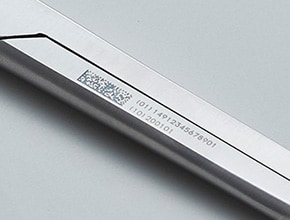


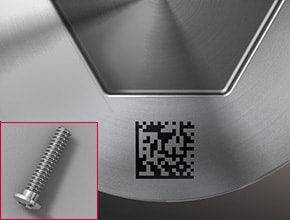
- Jewelry
-
When it comes to jewelry, steel is a common metal used in different variations for products like necklaces, bracelets, rings, and hairpins. Types of steel vary in carbon makeup, with the highest being carbon steel. Carbon steel is known for its matte finish and carbon percentage of up to 2.1%. Other steels used in the jewelry industry include 304L and 316 stainless steel, which range from .03-.08% carbon. Using carbon migration laser marking on these surfaces creates a beautiful black customer personalization or company logo, without the risk of damaging these often expensive or meaningful pieces. Similar to the case of medical devices, using carbon migration for jewelry is successful because of the metals and the ability of the laser marker to tackle difficult shapes and sizes.
We’re here to provide you with more details.
Reach out today!

Carbon Migration Laser Marking Technology and Trends
Advances in Carbon Migration Laser Marking Technology
The laser marking market is expected to have a CAGR of 5.8% from 2023 to 2028. Since carbon migration laser marking is used frequently in the medical and aerospace fields, it’s predicted that the use will grow.
Comparison to Other Laser Marking Technologies and Where Carbon Migration Fits in
There is a wide range of marking styles that lasers are capable of outside of carbon migration including engraving, etching, and annealing. The closest process to carbon migration is annealing. Annealing is similar in that the process uses heat to form a black film on a surface and leaves a mark in the film.
Engraving, oxidizing, and etching are vastly different from carbon migration. Although all three can be achieved with KEYENCE’s MD-X Hybrid laser Series, laser etching and engraving are both processes of vaporizing the surface of the material to create depth. Engraving can produce similar results to machining away material, often in a fraction of the time. On the opposite end of the spectrum, oxidizing is a more intense process where the laser will actually produce a contrasting mark raised higher than the original surface.
We’re here to provide you with more details.
Reach out today!

Related Downloads
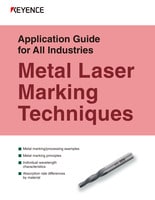
This quick guide introduces the basics of metal marking. Learn why different wavelengths matter and discover the various ways laser light interacts with metal parts.

